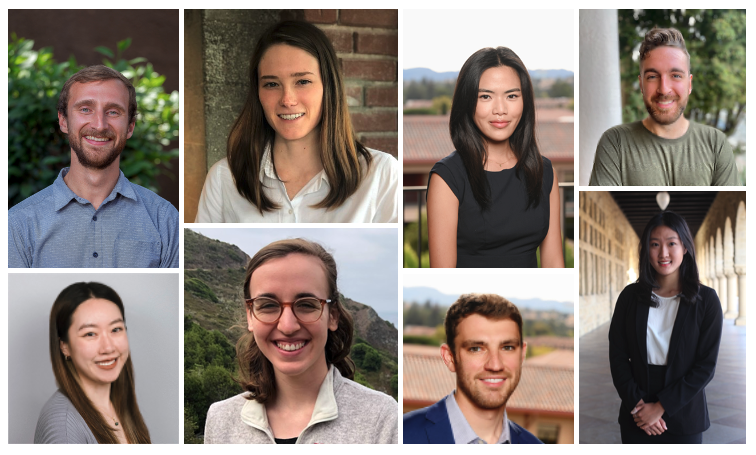
A collage of guest authors who have contributed articles to The Gigaton, from left to right: John Foye (Stanford MBA), Rae Oakley (Stanford MBA), Claire Yun (Stanford MBA/MS), TJ Considine (Berkeley Haas MBA), Celia Hauw (Columbia MBA), Pat Dowling (Stanford MBA), and Michelle Park (Stanford University.)
To avoid the 2 degrees Celsius of global warming widely recognized as the threshold to avoid climate catastrophe, the world needs to eliminate 1,000 of gigatons of CO2-equivalent emissions by 2050.
But what does that mean? How do you wrap your head around a gigaton – a billion tons – much less a thousand of them? If a person wants to have real impact on such an enormous problem, is it more effective to scale sustainable materials for clothing, reduce the use of fertilizers, or work to save the Amazon rainforest?
A newsletter by three Stanford MBAs is trying to help answer those questions. Aptly named The Gigaton, the Substack newsletter seeks to quantify, in actual gigatons, the real impact emerging solutions have on the climate. Their target audience? Talented young professionals looking for careers with impact.
“I think this is one of the most meaningful projects this year,” says Glenn Kramon, a New York Times editor for more than 25 years and teacher of Stanford GSB’s Winning Writing workshop.
“I admire these three students for steering the smartest people to our most intractable problem. Smart people are the ones who will help us address climate change.”
CALCULATING THE GIGATON POTENTIAL
The Gigaton was launched last year by Stella Liu, Joseff Kolman, and Georgia Kossoff, all second-year MBAs at Stanford Graduate School of Business. It publishes articles focused on climate solutions twice a month with one key differentiator: Each begins with the solution’s Gigaton Potential, the quantifiable number of greenhouse emissions the solution would eliminate if enacted to its full potential.
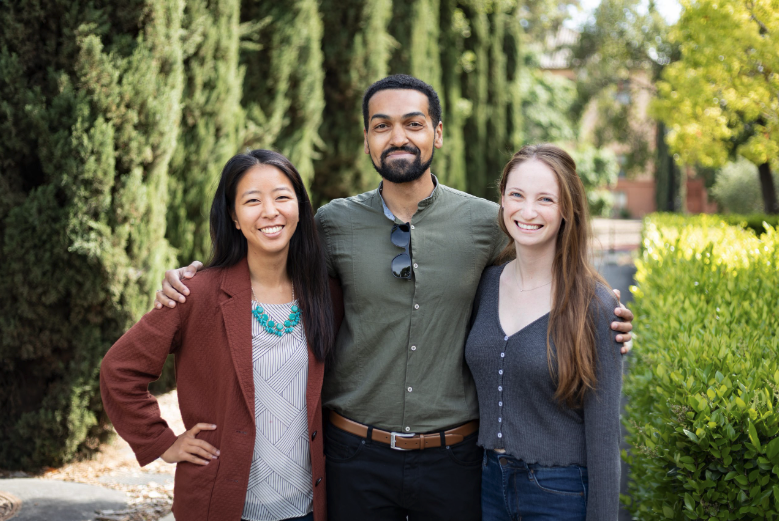
The Gigaton creators are, from left to right, Stella Liu, Joseff Kolman, and Georgia Kossoff, all second-year MBAs at Stanford Graduate School of Business.
So, from our earlier example, scaling sustainable materials for clothing and adopting next-generation fibers could reduce total emissions by 24 GT by 2050. Reducing the overuse of fertilizer could reduce emissions by 3 to 12 GT. Not cutting down the Amazon rainforest could prevent 76 GT of carbon from escaping back into the atmosphere.
“My hope with the newsletter is to see students that change their careers, or even focus their careers, on something that will have a higher impact,” Kossoff tells P&Q. “I felt like that was a really important and potentially missing piece, because we talk so much about climate broadly as young professionals in a university community, but what I was struggling with was how to direct all of this talent to really move the needle for climate change.”
The creators adopted the 1,000 GT threshold from Project Drawdown, a nonprofit research group focusing attention and resources on climate solutions that will reduce greenhouse emissions. To put it in context, the world emitted 51 gigatons of greenhouse gasses in 2019.
While the newsletter is not a jobs board, articles do highlight key industry players to help direct climate-minded professionals where to start their job searches or to map out their careers. Readers learn about the sustainability work of industry leaders – like GE Lighting which continually invests R&D into LED lighting to use less electricity – as well as emerging startups they may have never heard of (like Arloid which uses Deep Reinforcement Learning to optimize a building’s energy efficiency, reducing emissions by up to 30%). Articles also outline opportunities for innovation in each solution, an endless source of inspiration for sustainability-minded entrepreneurs.
THE THREE CLIMATEERS
Kramon taught the creators, whom he nicknamed The Three Climateers, in his Stanford GSB writing course and has helped advise them along the way. While the newsletter has since expanded to several other business schools – including The Wharton School, Harvard Business School, and Chicago Booth – it’s fitting that the project started as a way to direct Stanford students to impactful climate careers, he says.
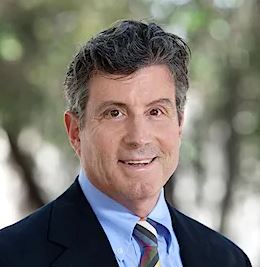
Glenn Kramon
In September, Stanford launched the Doerr School of Sustainability – the university’s first new school in 70 years – with a $1.1 billion gift from John and Ann Doerr, the largest in Stanford history. Its School of Engineering – training people to design, develop, and apply solutions to technical problems – is Stanford’s biggest academic school by far. And, Stanford sits at the heart of Silicon Valley, recently rocked by a series of high-profile tech layoffs.
The audience is practically built in.
“This is why I think that The Gigaton is so important: It has a potential audience of people who can make a difference. Rather than just talk about it, they can do something about it,” Kramon tells P&Q. “You have to change the mindset, and that’s what these three are doing.”
Poets&Quants had the chance to sit down with Stanford’s Three Climateers to talk about The Gigaton’s mission, growth, and potential impact. Our conversation has been edited for length and clarity.
Tell me about the genesis of The Gigaton and how the idea developed.
Liu: Last year, the inspiration just hit me one day: I wanted to start a newsletter, and I thought it’d be fun to do it with my classmates. I went on our climate Slack channel and posted that I was interested in doing something. Within the day, I had a lot of people message me. There was a lot of energy, not just from me, but from a ton of other students who wanted to write about these topics.
It was pretty organic from there. We started meeting every single week, and it ended up evolving into not just a newsletter, but more of a publication. A lot of our classmates have a lot of experience in climate or are interested in climate. I saw a lot of curiosity, people digging in and being able to understand one climate solution really well. So, we started expanding to different MBA programs this year, having a lot of students write about what they’re excited about, and then sharing that within our network of students who read it every week.
What resonated with you, Joseff, when you saw that first call out on the climate Slack channel?
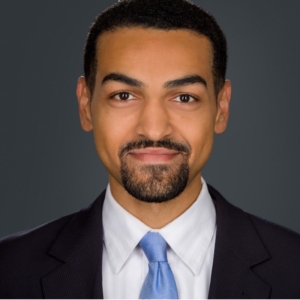
Joseff Kolman, MBA ’23
Kolman: For me, coming from a STEM background in physics and a very quantitative political science major, I don’t have that much experience in writing. I knew coming into my MBA that I wanted to have a lot of opportunities to practice writing. So I took Glenn’s class, and it really helped a lot. And Gigaton was an opportunity for me to get more practice.
On top of that, with my experience in electricity markets and renewable energy, I knew that I had information that I wanted to share. I did see new people entering the climate space, and they were asking questions on which I felt I could be helpful. When we first got started with The Gigaton, that group of people wanted to do the same thing. It just turned into a really great experience.
Georgia, what about you?
Kossoff: When I think about the climate crisis, the thing that gives me the most hope – and we talked about this a lot in The Gigaton – is all of the interest from these incredible students, industry leaders, and young professionals. With The Gigaton, I saw a way to kind of amplify our impact and create a ripple effect that would continue beyond us. For every person that we can help direct into a climate career, or into a higher impact climate career, I think the impact of what we do with The Gigaton is more than we could ever measure. That was what I was most excited about: The chance for this to extend beyond ourselves.
There are so many ways that you can work on climate, but there’s not a lot telling you where your skills will be most valuable and what kinds of companies are going to really change the world. I was most excited about this quantifiable impact.
Stella, what is the mission of The Gigaton? I know you’re reaching out to other MBA programs now, but do you hope to reach beyond MBAs as well?
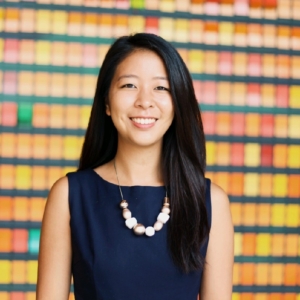
Stella Liu, MBA ’23
Liu: Our mission is to guide what we call climate newbies to identify a career of the highest impact. That’s why we strive to be very clear and explain things in a really simple way. We’re really targeting someone who’s a little bit new to climate or wants to learn about the range of possibilities that are available for them to work on. But we anchor every article on our goal: How do we avoid the two degrees of warming that our planet is on track to hit?
We started with MBA students because that’s who we are, but we envision this message and the content reaching people beyond that. We’ve been seeing a lot of interest, for instance, in undergrad and in graduate schools beyond the business school programs.
It’s also grown a bit organically beyond the student network. It’s been really great to see other VC investors or other climate entrepreneurs actually start subscribing. So even though we are very focused on speaking to the student profile, we’ve been seeing interest beyond that.
What kind of growth have you seen since launching last year?
Kossoff: When we first started publishing, we initially saw it as a Stanford project, and we were targeting Stanford students. We sent it out to the GSB community and did a bit of outreach to other Stanford organizations and schools.
A few months in, we looked at our numbers, and we realized that we had a pretty good proportion of GSB subscribed. Students were liking the articles and giving good feedback. That’s when we started to think maybe this could be something more than just a Stanford GSB centric newsletter. Midway through the year, we started expanding our reach to both other schools within Stanford and also to other universities.
Now, we distribute the newsletter to about ten other universities, mostly going through their business schools and their climate communities. We have recruited ambassadors from these universities who are helping to spread the word, and we’re hoping to actually formalize that presence, starting by the end of this year. We’d like to form 10 chapters, each based at the outside university, as well as recruiting new readers and new authors. We are crowd sourced, so all of our articles are written by students with expertise. We are now starting to see articles from other schools, which is really exciting.
Our articles, on average, get around 2000 views per article, and we have 1,200 subscribers. Which is amazing, because we’ve seen that grow pretty significantly from the beginning.
What universities have you expanded to?
Kolman: We’ve got Wharton, HBS, Northwestern, MIT Sloan, Chicago Booth, and Yale. We also have a presence in Emory and McCombs in Texas.
Why do you think it has resonated?
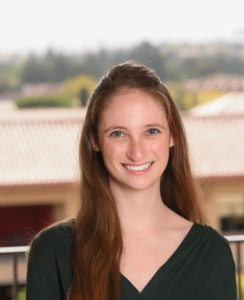
Georgia Kossoff, MBA ’23
Kossoff: The feedback from our readers is that they like the format. We tried to make it really bite sized and accessible for climate newbies. But we also realized that, even if you have climate expertise in one subject matter, there might be solutions that are still very much out of your depth. So, by writing at this level, we make it accessible for everyone regardless of experience level.
We also tried to make them very tactical; It’s not just a 101 on the solution. We’ve profiled companies that we think are doing really cool things as well as startups that are high potential.
We’ve heard from readers, interestingly, that some are using it as a career guide or to build an investment thesis, but others are actually just using it so that they can sound educated in conversations and know the lay of the land in climate. I think that’s partially what’s made it resonate.
Another aspect is that, because the authors are often students at these universities, we’re giving students a chance to showcase their expertise. Students really feel connected to the material; It’s interesting to learn from people who are on the ground versus third parties that are just writing about it from secondary research.
What is your vetting process for ensuring the content is accurate?
Liu: The way our process works is people reach out to us and then pitch us different areas they want to write about. Because we anchor each article on the gigaton impact, we do want to make sure that the solution they’re proposing is impactful. It’s not interesting for us to write about solutions that are less than one gigaton; We want to look for really big impactful solutions and highlight those in our newsletters. So that’s one cut off.
People also send us their resumes, so we get a sense of what they’ve worked on in the past. We make sure that every person in the writing process gets their article reviewed by an expert. That could be a professor, that could be someone working in the space. We also have everyone cite all their sources and include all the articles they pulled information from. So all those processes are in place because we do want high-quality content.
What do you think sets The Gigaton apart from other climate centered publications?
Kolman: Two things that come to mind: First is the quantification. In some climate newsletters, they do great diligence on different technologies or different companies, but they lack that comparison metric across solution types.
Second, we do a good job of bridging that 101 and the companies that are active in that space to not only provide you with the understanding of how a technology or solution works in reality, but also who are the people on the ground that are working on it. I think that’s done in a very digestible way. If someone wants to take action in that space, they can.
We actually had a really interesting bit of feedback from one of our authors (Rae Oakley) who wrote, “The Massive Opportunity of Mass Timber.” She said that while she had really good response from folks on LinkedIn, etc., she was actually contacted by a mass timber company disappointed that they didn’t show up on the market map that she had created. We’re so pleased to see that kind of interaction.
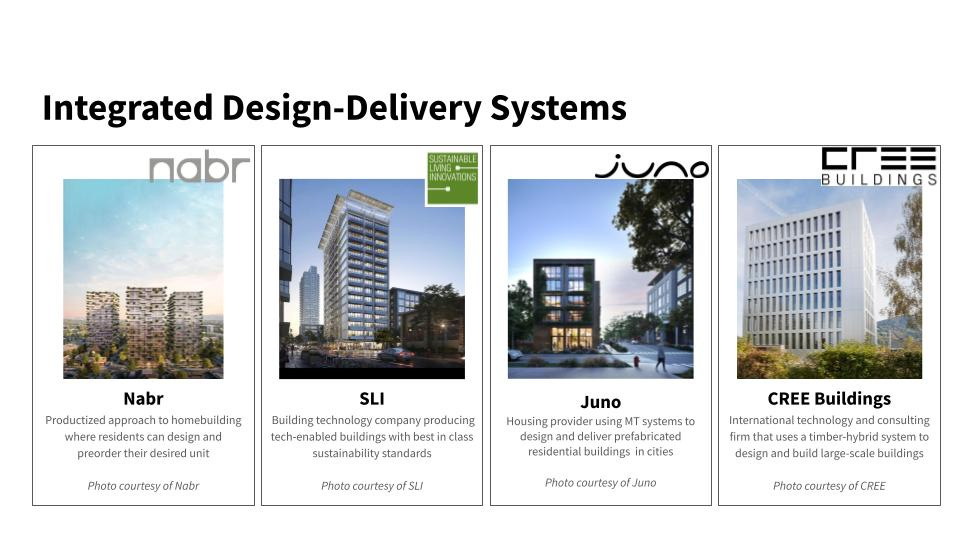
A graphic showing companies using integrated design delivery systems from Gigaton’s article on mass timber.
What are some specific articles that you think had great impact, or are illustrative of what The Gigaton is about?
Kossoff: This summer, I wrote about building automation that was a cool case study for me. I had done some automation work when I was consulting, and so I wrote about it as a sustainability solution.
This was really interesting for two reasons: First because I got to work with Lincoln Bleveans who runs sustainability in operations on Stanford University’s campus. He wound up later doing an interview for The Gigaton about running sustainable operations on the scale of a campus like Stanford.
And second, after my article was published, a recent Stanford alum who’s now in D.C. reached out to me because she was writing an investment thesis on building automation. She used The Gigaton article to help structure her thesis, which was awesome to hear. Not only was it an interesting subject area for me with exciting gigaton potential, but it was a great way to bring in connections both from Stanford and from our alumni community.
Stella, how about you?
Liu: One article that stood out to me was, “The Amazon Rainforest: A Climate Superpower” by Mariana Heredia.
When the author initially reached out to me on the topic, I was a little bit concerned about the gigaton potential. But, I was just blown away when she told me that if it was a country, the amount of carbon emissions emitted through tropical deforestation would be No. 3, right behind the U.S. and China. I think that shows how important it is to quantify the impact. She wrote an amazing article on the Amazon rainforest and what a climate superpower it is. If we can protect it from being cut down, it would be a huge lever to combat climate change.
And Joseff?
Kolman: I’m a bit of a technologist; I still have a love for the science that took me through undergrad. I thoroughly enjoyed “Wastewater: A Dirty Little Climate Opportunity” by Daly Wettermark, a classmate of mine from undergrad who’s now doing wastewater work in the private sector. It was great being able to reach a broader network than just MBAs, to reach someone who’s a practitioner in this space to guest author.
Oftentimes in climate tech, people are talking about the really large solutions like direct air capture and fusion and wind and solar, but they don’t put as much attention on these smaller, less sexy technologies that can really make a difference. Throughout the article, she’s talking like ‘Look, humans create waste, waste decomposes, it makes CO2.’ So, just being able to give a platform to a solution like that was really, really satisfying.
Have you heard of a reader of The Gigaton who actually made a career change based on an article, or an industry they read about?
Kossoff: My fiance actually used The Gigaton to make a pitch for a VC job. He used Stella’s article, Understanding Onshore Wind, to write his investment thesis and now he’s working in VC, and he hopes to ultimately do climate. So he was definitely inspired by it.
Our cohort is still in its second year, so our classmates actually haven’t finalized jobs for after graduation. But we definitely want to follow up with more of our readers and see what it led to in terms of jobs, once we start to get to that stage in the spring.
What are the plans for The Gigaton after you three graduate?
Kossoff: All three of us are planning to stay on board because we feel really invested in it, and we’re excited about expanding it beyond a student project.
Our goal, by the time we leave Stanford, is that we’ll have established leadership to continue for the next year at both Stanford as well as a cohort of other universities. We’ve already started that recruiting process. Our vision is that it’ll continue to run as it has with us, but with more diversity across the schools. It will be co-owned across all of these universities and be a cross-university climate community for students to showcase their knowledge and share expertise. We hope it will become a self-sustaining organization where each year there’s new leadership and that it will grow across more and more universities.
Read and subscribe to The Gigaton here.

Stella Liu is the daughter of Taiwanese immigrants whose interest in climate began as a young girl. On frequent trips back to China and Taiwan, she watched rural agriculture economies turn to ones with ever taller skyscrapers. “I became really interested in land use changes and how to evolve our food system sustainably, while still being able to elevate life around the world.”
She studied international studies with a focus on Asia and UC Irvine, and worked as a product manager at IBM Watson and later at Indigo, expanding her interest in using technology to upscale sustainable solutions in agriculture.
After graduating from GSB, she plans to work in climate technology investing.

Joseff Kolman, originally from Savannah, Georgia, majored in physics and political science at MIT. He worked in energy policy, interning for the House Committee on Energy and Commerce, consulting in renewable energy projects for large companies like McDonald’s and Wells Fargo.
After graduation, he plans to work in early-stage VC, investing in the climate hardware companies that needed to shift to a more sustainable physical economy.

Georgia Kossoff grew up between Florida and Hawaii. “Over the past five years or so, I’ve seen almost every member of my family transition their career to be focused on climate because it was hard to ignore the loss of the reefs that we were seeing in Hawaii and the landscape changing in Florida.”
She studied chemistry and business at Emory University. As a Bain consultant, she has tried to focus as much of her time on climate as she could, either through pro bono consulting projects or internal sustainability work. “I’ve been really excited to kind of hone my sustainability skill set while I’m at Stanford because I feel the same calling that my family feels to try to fix this crisis.”
She will returning to Bain & Company as a consultant after graduation and hopes to do as much climate consulting work as possible.
DON’T MISS: CHATGPT JUST PASSED THIS WHARTON PROFESSOR’S FINAL EXAM. HE SAYS HE WON’T BAN THE AI TOOL AND NYU STERN’S JOHANNES STROEBEL, WINNER OF THE FISCHER BLACK PRIZE FOR FINANCIAL RESEARCH WITH IMPACT










